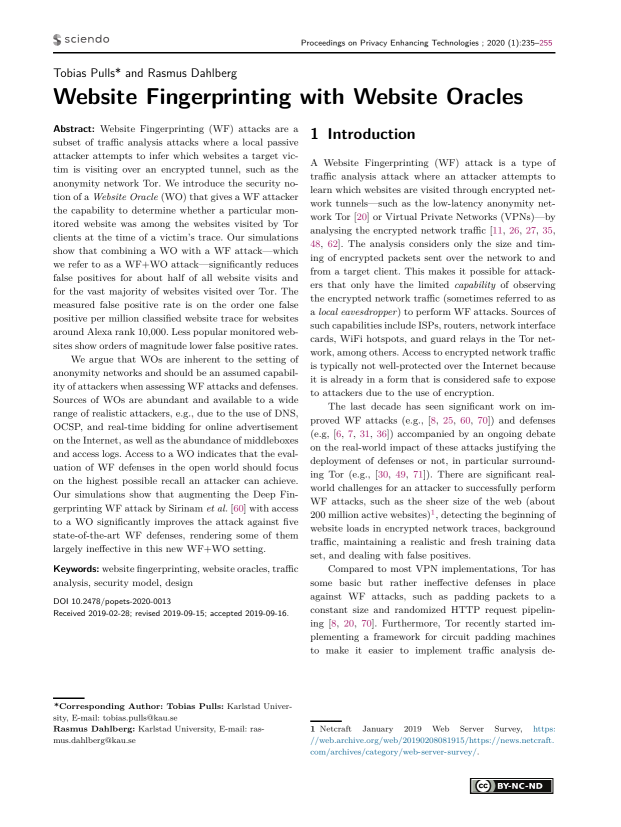Website Fingerprinting with Website Oracles
Authors: Tobias Pulls (Karlstad University), Rasmus Dahlberg (Karlstad University)
Volume: 2020
Issue: 1
Pages: 235–255
DOI: https://doi.org/10.2478/popets-2020-0013
Abstract: Website Fingerprinting (WF) attacks are a subset of traffic analysis attacks where a local passive attacker attempts to infer which websites a target victim is visiting over an encrypted tunnel, such as the anonymity network Tor. We introduce the security notion of a Website Oracle (WO) that gives a WF attacker the capability to determine whether a particular monitored website was among the websites visited by Tor clients at the time of a victim’s trace. Our simulations show that combining a WO with a WF attack—which we refer to as a WF+WO attack—significantly reduces false positives for about half of all website visits and for the vast majority of websites visited over Tor. The measured false positive rate is on the order one false positive per million classified website trace for websites around Alexa rank 10,000. Less popular monitored websites show orders of magnitude lower false positive rates. We argue that WOs are inherent to the setting of anonymity networks and should be an assumed capability of attackers when assessing WF attacks and defenses. Sources of WOs are abundant and available to a wide range of realistic attackers, e.g., due to the use of DNS, OCSP, and real-time bidding for online advertisement on the Internet, as well as the abundance of middleboxes and access logs. Access to a WO indicates that the evaluation of WF defenses in the open world should focus on the highest possible recall an attacker can achieve. Our simulations show that augmenting the Deep Fingerprinting WF attack by Sirinam et al. [60] with access to a WO significantly improves the attack against five state-of-the-art WF defenses, rendering some of them largely ineffective in this new WF+WO setting.
Keywords: website fingerprinting, website oracles, traffic analysis, security model, design
Copyright in PoPETs articles are held by their authors. This article is published under a Creative Commons Attribution-NonCommercial-NoDerivs 3.0 license.


